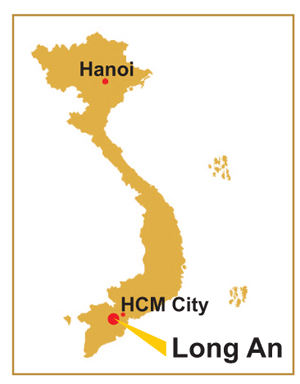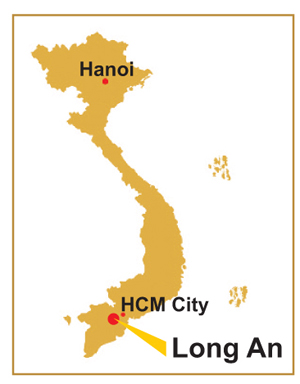(No.5, Vol.7,Oct-Nov 2017 Vietnam Heritage Magazine)


An ancient bed as old as the house

An old-style lantern

A set of wooden plates
The Hundred Pillar House, Cau Ngang Village, Long Huu Dong Commune, Can Duoc District, Long An Province, with its Hue-style architecture and elaborate wood carvings was named a national historical and cultural relic in 1997 by the Ministry of Culture, Sports and Tourism.
Called Hundred Pillar House, it actually has as many as 120 pillars. Built in a 4,886m2 garden, the one-storey, 822m2 house has 3 main compartments and two double lean-tos. The house frame and all the furniture inside were made from precious timbers such as rose-wood, ebony wood, and red wood. The roofs are covered with flip-flop tiles and the floor with hexagonal bricks.
The house’s first owner was councilor Tran Van Hoa. He invited 15 masters from Hue to build it from 1898 to 1903. The construction took 2 years and wood carving work 3 years.
Experts say that the Hundred Pillar House is heavily influenced by the Hue architectural style. But as it was made on order from a southerner in French colonial times, many local and contemporary elements were introduced in the decorative themes, making it different and unique, reflecting the evolution of Southern culture in late 19th and early 20th Century.
Current owner and inhabitant of the house, Ms Tran Thi Ngo, daughter-in-law of councilor Tran Van Hoa said, ‘Hue palace and residential architecture is shown clearly in the decorative carvings on the beam ends, pillar tops and railings under the four sacred motif of dragon, kylin, tortoise and phoenix.’
Ms Ngo added, ‘With love to the Southern land, the owner had the carvers add local fruits such as mangosteen, custard-apples, bullock’s heart to the wooden reliefs. The classical motifs were combined with plenty of Southern elements together with Western themes. Regarding carving techniques, the Hundred Pillar House combines many of them such as relieving, and sculpting with a very high level of sophistication.
In recent years, Ms Ngo and her children have received a lot of tourists and visitors who came to contemplate the house. Many film crews also came to take scenes for historical movies.

